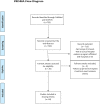A Case for Risk Stratification in Survivors of Firearm and Interpersonal Violence in the Urban Environment
- PMID: 33207158
- PMCID: PMC7673864
- DOI: 10.5811/westjem.2020.8.45041
A Case for Risk Stratification in Survivors of Firearm and Interpersonal Violence in the Urban Environment
Abstract
The emergency department (ED) serves as the main source of care for patients who are victims of interpersonal violence. As a result, emergency physicians across the nation are at the forefront of delivering care and determining dispositions for many at-risk patients in a dynamic healthcare environment. In the majority of cases, survivors of interpersonal violence are treated and discharged based on the physical implications of the injury without consideration for risk of reinjury and the structural drivers that may be at play. Some exceptions may exist at institutions with hospital-based violence intervention programs (HVIPs). At these institutions, disposition decisions often include consideration of a patient's risk for repeat exposure to violence. Ideally, HVIP services would be available to all survivors of interpersonal violence, but a variety of current constraints limit availability. Here we offer a scoping review of HVIPs and our perspective on how risk-stratification could help emergency physicians determine which patients will benefit most from HVIP services and potentially reduce re-injury secondary to interpersonal violence.
Conflict of interest statement
Figures
References
-
- Gani F, Sakran JV, Canner JK. Emergency department visits for firearm-related injuries in the United States, 2006–14. Health Aff (Millwood) 2017;36(10):1729–38. - PubMed
-
- Centers for Disease Control and Prevention. Web-based injury statistics query and reporting system (WISQARS) 2018. [Accessed August 6, 2018]. Available at: https://www.cdc.gov/injury/wisqars/index.html.
-
- Brooke BS, Efron DT, Chang DC, et al. Patterns and outcomes among penetrating trauma recidivists: It only gets worse. J Trauma. 2006;61(1):16–20. - PubMed
-
- Fahimi J, Larimer E, Hamud-Ahmed W, et al. Long-term mortality of patients surviving firearm violence. Inj Prev. 2016;22(2):129–34. - PubMed
Publication types
MeSH terms
Grants and funding
LinkOut - more resources
Full Text Sources
Research Materials

